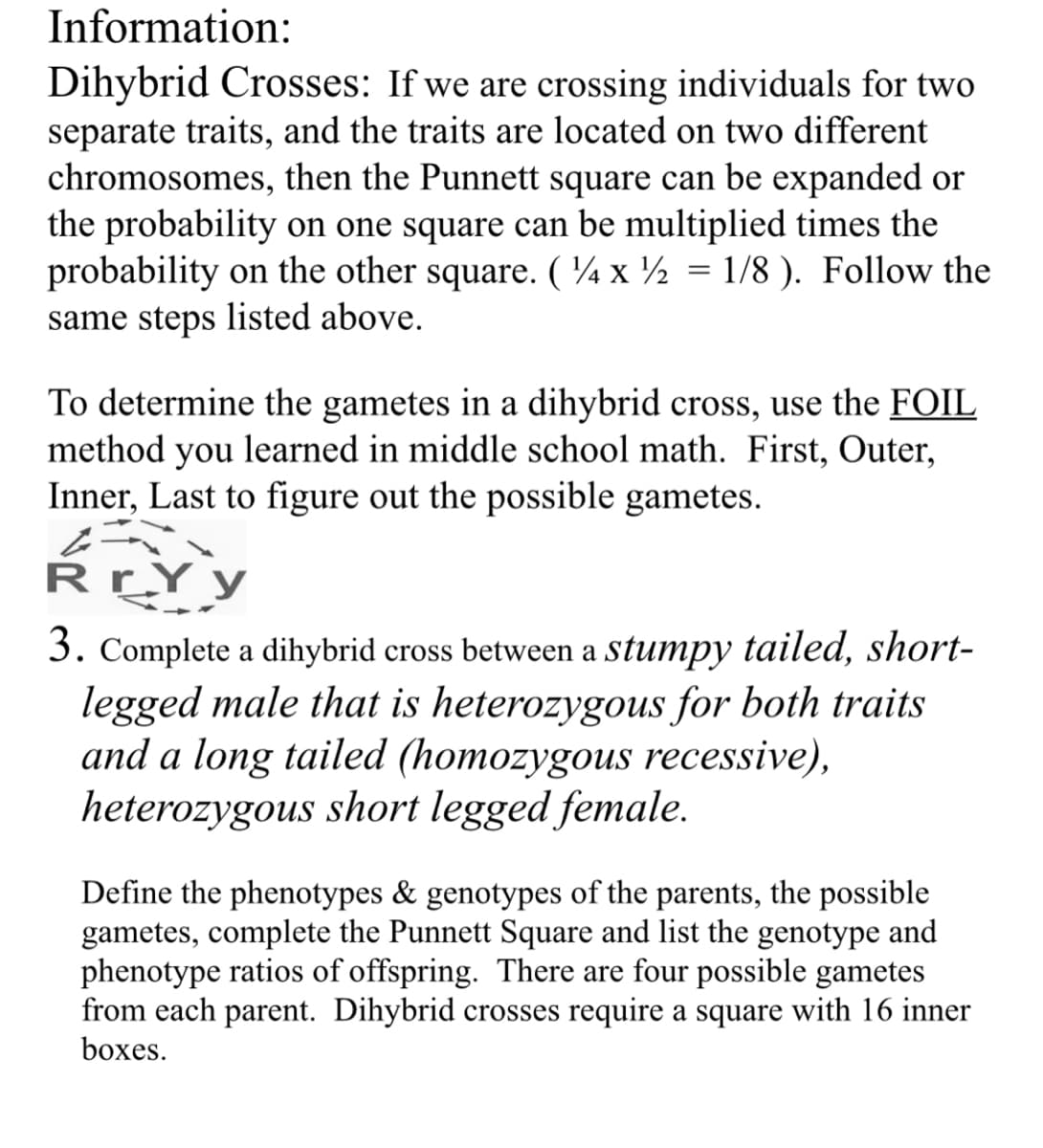3. Complete a dihybrid cross between a Stumpy tailed, short- legged male that is heterozygous for both traits and a long tailed (homozygous recessive), heterozygous short legged female. Define the phenotypes & genotypes of the parents, the possible gametes, complete the Punnett Square and list the genotype and phenotype ratios of offspring. There are four possible gametes from each parent. Dihybrid crosses require a square with 16 inner boxes.
3. Complete a dihybrid cross between a Stumpy tailed, short- legged male that is heterozygous for both traits and a long tailed (homozygous recessive), heterozygous short legged female. Define the phenotypes & genotypes of the parents, the possible gametes, complete the Punnett Square and list the genotype and phenotype ratios of offspring. There are four possible gametes from each parent. Dihybrid crosses require a square with 16 inner boxes.
Concepts of Biology
1st Edition
ISBN:9781938168116
Author:Samantha Fowler, Rebecca Roush, James Wise
Publisher:Samantha Fowler, Rebecca Roush, James Wise
Chapter8: Patterns Of Inheritance
Section: Chapter Questions
Problem 2ACQ: Figure 8.10 In pea plants, purple flowers (P) are dominant to white (p), and yellow peas (Y) are...
Related questions
Topic Video
Question

Transcribed Image Text:Information:
Dihybrid Crosses: If we are crossing individuals for two
separate traits, and the traits are located on two different
chromosomes, then the Punnett square can be expanded or
the probability on one square can be multiplied times the
probability on the other square. ( ¼ x ½ = 1/8 ). Follow the
same steps listed above.
To determine the gametes in a dihybrid cross, use the FOIL
method you learned in middle school math. First, Outer,
Inner, Last to figure out the possible gametes.
RrYy
3. Complete a dihybrid cross between a stumpy tailed, short-
legged male that is heterozygous for both traits
and a long tailed (homozygous recessive),
heterozygous short legged female.
Define the phenotypes & genotypes of the parents, the possible
gametes, complete the Punnett Square and list the genotype and
phenotype ratios of offspring. There are four possible gametes
from each parent. Dihybrid crosses require a square with 16 inner
boxes.
Expert Solution
This question has been solved!
Explore an expertly crafted, step-by-step solution for a thorough understanding of key concepts.
This is a popular solution!
Trending now
This is a popular solution!
Step by step
Solved in 2 steps

Knowledge Booster
Learn more about
Need a deep-dive on the concept behind this application? Look no further. Learn more about this topic, biology and related others by exploring similar questions and additional content below.Recommended textbooks for you

Concepts of Biology
Biology
ISBN:
9781938168116
Author:
Samantha Fowler, Rebecca Roush, James Wise
Publisher:
OpenStax College

Concepts of Biology
Biology
ISBN:
9781938168116
Author:
Samantha Fowler, Rebecca Roush, James Wise
Publisher:
OpenStax College